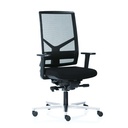PINCHED NERVES DEMYSTIFIED
If you are wondering as to what is a pinched nerve we have the right answers for you. Pinched nerves or nerve compression, as it is more commonly known are a common medical condition which most would have experienced at least once in a lifetime. The typical presentation is pain which is a warning signal that the nerve has been damaged. The damage may be temporary or permanent.
THE VARIANTS
A commonly seen variant is Sciatica which could be attributed to a pinched Sciatic nerve. The presentation is typically leg pain which could be excruciating and incapacitating at times. On the contrary a pinched nerve in back would evidently present with lower back pain which is best controlled by medications or posture correction.
TREATMENT OPTIONS
The preferred treatment option for Sciatica is arguably about ergonomic prevention measures. Ergonomics is best defined as the study of body movements during execution of any work or movement. Those seeking relief from lower back and leg pain in Sciatica would benefit by adopting one or more of these ergonomic measures - see below
:
THE CHAIR
Maintaining a prolonged sitting posture can trigger off pain episodes in those diagnosed positive for Sciatica. This lower back and leg pain is best controlled by taking small breaks and leaving the chair every 20 minutes. Alternatively using an ergonomically designed chair with an adjustable back support could work wonders for those with Sciatica.
Concurrently one would need to ensure keeping the entire body functioning as a single unit rather than twisting and turning the body while sitting. This is best achieved using the present day ergonomically designed chairs which come equipped with wheels and hence one could roll and turn with the chair rather the twisting and turning. It is also very important to ensure the chair is compatible with the working space. There often is a problem with non-adjustable arm rests stopping the users from sitting into their work desk.
POSTURAL ERGONOMICS AND SCIATICA
When getting up from the chair avoid bending forwards at the waist, rather slide to the edge of the seat and then use the legs to stand. This invariably ensures that the probability of contracting a pinched Sciatic nerve is minimized. Thus it is evident that proper use of chairs and posture could well ensure lower back and leg pain relief.
ORGANIZED WORKPLACE
Ensuring that work and office equipment is within easy reach would ensure that there little forward bending or reaching out to pick up objects or work. Keeping the shoulders relaxed and resting the elbows securely on the desk would avoid being afflicted with pinched nerves in the back.
COMPUTER ERGONOMICS
One of the most important modalities for pain and leg relief in Sciatica is about using the right posture while working on computers. If statistics are any index ninety percent of Americans work on a computer for at least three hours a day. This makes it more than evident that computer ergonomics are critical in the management of Sciatica and pinched nerves in the back.
Ergonomists invariably advice keeping the monitor at eye level and ensuring that the mouse and the keyboard are always within easy reach thus avoiding the need to reach out.
BODY BALANCE
One of the lesser known facts being that while standing is healthy, prolonged standing for 15 minutes or longer can strain and fatigue body muscles and hence pinched nerves in the back are a common outcome. Strategic preventive countermeasures like shifting body weight from one foot to the other at periodic intervals can help minimize lower back and leg pain significantly.
Thus ergonomics continues to be the mainstay of prevention and treatment for pinched sciatic nerve and pinched nerves in the back alike and is one modality which is here to stay.















